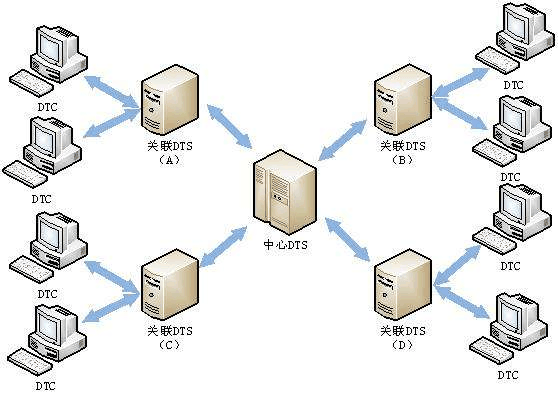Web应用程序是一种可以通过Web访问的应用程序,程序的最大好处是用户很容易访问应用程序,用户只需要有浏览器即可,不需要再安装其他软件
应用程序有两种模式C/S、B/S。C/S是客户端/服务器端程序,也就是说这类程序一般独立运行。而B/S就是浏览器端/服务器端应用程序,这类应用程序一般借助IE等浏览器来运行。WEB应用程序一般是B/S模式。Web应用程序首先是“应用程序”,和用标准的程序语言,如C、C++等编写出来的程序没有什么本质上的不同。然而Web应用程序又有自己独特的地方,就是它是基于Web的,而不是采用传统方法运行的。换句话说,它是典型的浏览器/服务器架构的产物。
| 网络应用程序不需要任何复杂的“展开”过程,你所需要的只是一个适用的浏览器; |
| 网络应用程序通常耗费很少的用户硬盘空间,或者一点都不耗费; |
| 它们不需要更新,因为所有新的特性都在服务器上执行,从而自动传达到用户端; |
| 网络应用程序和服务器端的网络产品都很容易结合,如email功能和搜索功能; |
| 因为它们在网络浏览器窗口中运行,所以大多数情况下它们是通过跨平台使用的 (例如Windows,Mac,Linux等等) |
| 网络应用程序强调浏览器的适用性。如果浏览器方没有提供特定的功能,或者弃用特定的平台或操作系统版本(导致不适用),就会影响大量用户; |
| 网络应用依靠互联网远程服务器端的应用文件。因此,当连接出问题时,应用将不能正常使用。 |
| 许多网络应用程序不是开源的,只能依赖第三方提供的服务,因此不能针对用户定制化、个性化,而且大多数情况下用户不能离线使用,因而损失了很多灵活性; |
| 它们完全依赖应用服务商的可及性。如果公司倒闭,服务器停止使用,用户也无法追索以前的资料。对比而看,即使软件制造商倒闭了,传统的安装软件也可以继续运行,尽管不能再更新或有其他用户服务; |
| 相似地,提供方公司对软件和其功能有了更大的控制权。只要他们愿意就能为软件添加新特性,即使用户想等bugs先被解决再更新。跳过较差的软件版本也不可能了。公司可以强加不受欢迎的特性给用户,也可以随意减少带宽来削减开支。 |
| 公司理论上可以检索任何的用户行为。这有可能引起隐私安全问题。 |
浏览器/服务器架构(Browser/Server,简称B/S)能够很好地应用在广域网上,成为越来越多的企业的选择。浏览器/服务器架构相对于其他几种应用程序体系结构,有如下3方面的优点:
| 这种架构采用Internet上标准的通信协议(通常是TCP/IP协议)作为客户机同服务器通信的协议。这样可以使位于Internet任意位置的人都能够正常访问服务器。对于服务器来说,通过相应的Web服务和数据库服务可以对数据进行处理。对外采用标准的通信协议,以便共享数据。 |
| 在服务器上对数据进行处理,就处理的结果生成网页,以方便客户端直接下载。 |
| 在客户机上对数据的处理被进一步简化,将浏览器作为客户端的应用程序,以实现对数据的显示。不再需要为客户端单独编写和安装其他类型的应用程序。这样,在客户端只需要安装一套内置浏览器的操作系统,直接安装一套浏览器,就可以实现服务器上数据的访问。而浏览器是计算机的标准设备 |
总结一下,本质上:浏览器是一个socket客户端,服务器是一个socket服务端
| import socket |
| |
| def server_run(): |
| soc = socket.socket() |
| soc.bind(('127.0.0.1', 8008)) |
| soc.listen(5) |
| while True: |
| conn, addr = soc.accept() |
| recv_data = conn.recv(1024) |
| print(recv_data) |
| |
| |
| |
| |
| |
| |
| |
| import time |
| now=time.strftime("%Y-%m-%d %H:%M:%S", time.localtime()) |
| print(now) |
| with open('index.html','r',encoding='utf-8') as f: |
| data=f.read() |
| data=data.replace('@@@',now) |
| conn.send(('HTTP/1.1 200 OK\r\n\r\n%s'%data).encode('utf-8')) |
| conn.close() |
| |
| if __name__ == '__main__': |
| server_run() |
| <!DOCTYPE html> |
| <html lang="en"> |
| <head> |
| <meta charset="UTF-8"> |
| <title>Title</title> |
| </head> |
| <body> |
| <h2>@@@</h2> |
| |
| <img src="https://gss2.bdstatic.com/9fo3dSag_xI4khGkpoWK1HF6hhy/baike/c0%3Dbaike92%2C5%2C5%2C92%2C30/sign=5e3814acf9edab64607f4592965fc4a6/14ce36d3d539b600c0c465d0eb50352ac65cb74b.jpg" alt=""> |
| </body> |
| </html> |
| import socket |
| |
| import pymysql |
| def index(request): |
| return '<img src="https://gss2.bdstatic.com/9fo3dSag_xI4khGkpoWK1HF6hhy/baike/c0%3Dbaike92%2C5%2C5%2C92%2C30/sign=5e3814acf9edab64607f4592965fc4a6/14ce36d3d539b600c0c465d0eb50352ac65cb74b.jpg"></img>' |
| |
| def login(request): |
| with open('login.html','r',encoding='utf-8') as f : |
| data=f.read() |
| return data |
| def time(request): |
| import datetime |
| now=datetime.datetime.now().strftime('%Y-%m-%d %X') |
| with open('time.html','r',encoding='utf-8') as f : |
| data=f.read() |
| data=data.replace('@@time@@',now) |
| return data |
| def user_list(request): |
| |
| conn = pymysql.connect(host='127.0.0.1', port=3306, user='root', passwd='123456', db='lqz') |
| cursor = conn.cursor(cursor=pymysql.cursors.DictCursor) |
| cursor.execute("select id,name,password from user") |
| user_list = cursor.fetchall() |
| cursor.close() |
| conn.close() |
| tr_list=[] |
| for row in user_list: |
| tr='<tr><td>%s</td><td>%s</td><td>%s</td></tr>'%(row['id'],row['name'],row['password']) |
| tr_list.append(tr) |
| |
| with open('user_list.html','r',encoding='utf-8') as f: |
| data=f.read() |
| data=data.replace('@@body@@',''.join(tr_list)) |
| return data |
| |
| def user_list_new(request): |
| |
| conn = pymysql.connect(host='127.0.0.1', port=3306, user='root', passwd='123456', db='lqz') |
| cursor = conn.cursor(cursor=pymysql.cursors.DictCursor) |
| cursor.execute("select id,name,password from user") |
| user_list = cursor.fetchall() |
| cursor.close() |
| conn.close() |
| with open('user_list_new.html','r',encoding='utf-8') as f: |
| data=f.read() |
| from jinja2 import Template |
| template=Template(data) |
| response=template.render(user_list=user_list) |
| |
| return response |
| |
| urls = [ |
| ('/index', index), |
| ('/login', login), |
| ('/time', time), |
| ('/user_list', user_list), |
| ('/user_list_new', user_list_new), |
| ] |
| |
| def run(): |
| soc = socket.socket() |
| soc.bind(('127.0.0.1', 8006)) |
| soc.listen(5) |
| while True: |
| conn, port = soc.accept() |
| data = conn.recv(1024) |
| |
| print(data) |
| data = str(data, encoding='utf-8') |
| request_list = data.split('\r\n\r\n') |
| head_list = request_list[0].split('\r\n') |
| method, url, htt = head_list[0].split(' ') |
| # conn.send(b'hello web') |
| conn.send(b'HTTP/1.1 200 OK \r\n\r\n') |
| print(url) |
| func_name = None |
| for u in urls: |
| if url == u[0]: |
| func_name = u[1] |
| break |
| if func_name: |
| response = func_name(data) |
| else: |
| response = '404 not found' |
| |
| conn.send(response.encode('utf-8')) |
| conn.close() |
| |
| if __name__ == '__main__': |
| run() |
| <!DOCTYPE html> |
| <html lang="en"> |
| <head> |
| <meta charset="UTF-8"> |
| <title>Title</title> |
| </head> |
| <body> |
| |
| <form action=""> |
| <p>用户名:<input type="text"></p> |
| <p>密码:<input type="password"></p> |
| |
| </form> |
| </body> |
| </html> |
| <!DOCTYPE html> |
| <html lang="en"> |
| <head> |
| <meta charset="UTF-8"> |
| <title>Title</title> |
| </head> |
| <body> |
| |
| @@time@@ |
| </body> |
| </html> |
| <!DOCTYPE html> |
| <html lang="en"> |
| <head> |
| <meta charset="UTF-8"> |
| <title>用户列表</title> |
| </head> |
| <body> |
| |
| <table border="1"> |
| <thead> |
| <tr> |
| <th>id</th> |
| <th>用户名</th> |
| <th>密码</th> |
| </tr> |
| </thead> |
| <tbody> |
| @@body@@ |
| </tbody> |
| |
| </table> |
| |
| </body> |
| </html> |
| <!DOCTYPE html> |
| <html lang="en"> |
| <head> |
| <meta charset="UTF-8"> |
| <title>用户列表</title> |
| </head> |
| <body> |
| <table border="1"> |
| <thead> |
| <tr> |
| <th>id</th> |
| <th>name</th> |
| <th>password</th> |
| </tr> |
| </thead> |
| <tbody> |
| |
| {% for user in user_list%} |
| <tr> |
| <td>{{user.id}}</td> |
| <td>{{user.name}}</td> |
| <td>{{user.password}}</td> |
| </tr> |
| {%endfor%} |
| |
| </tbody> |
| |
| </table> |
| |
| </body> |
| </html> |


